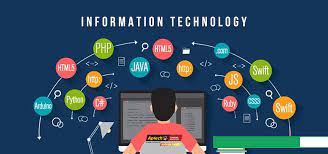In today’s digital age, data input devices play a vital role in providing information to computer systems for processing and analysis. These devices facilitate the transfer of data from external sources into a computer, enabling various tasks and operations. In this article, we will explore some of the most commonly used data input devices available today.

- Keyboard:
The keyboard is one of the primary input devices for computers. It features a set of keys, including alphanumeric keys, function keys, and special keys, allowing users to input text, commands, and other data. Keyboards are widely used in a variety of applications, from typing documents to gaming and programming. - Mouse:
The mouse is another widely used input device that provides a graphical interface for interacting with a computer. It consists of a hand-held device with buttons and a tracking mechanism, allowing users to move a cursor on the screen and perform various operations such as clicking, dragging, and scrolling. Mice are particularly useful for navigating graphical user interfaces and selecting objects on the screen. - Touchscreen:
Touchscreens have gained significant popularity due to their intuitive and user-friendly nature. These displays enable users to interact directly with the screen by touching or tapping on it. Touchscreens are commonly found in smartphones, tablets, laptops, and all-in-one computers, providing a versatile input method for data entry, navigation, and control. - Trackpad:
A trackpad is a touch-sensitive pad typically found on laptops and some desktop keyboards. It allows users to control the cursor by moving their fingers across the surface. Similar to a mouse, trackpads enable clicking, tapping, and scrolling gestures, providing a convenient input solution for laptops and portable devices. - Digital Pen/Stylus:
Digital pens or styluses are used for precise input on touchscreens and graphics tablets. They allow users to write, draw, or annotate directly on the screen, mimicking traditional pen and paper. Digital pens find applications in digital art, note-taking, and graphic design, offering a natural and precise input method. - Barcode Scanners:
Barcode scanners are devices used to read and capture data from barcodes. These devices use optical technology to scan barcodes and convert them into digital information that can be processed by a computer. Barcode scanners are commonly used in retail, inventory management, and logistics to expedite data entry and improve accuracy. - Webcam:
Webcams are input devices equipped with a camera that captures video and audio input. They are commonly used for video conferencing, online streaming, and video recording. Webcams allow users to transmit real-time visual and auditory information to a computer, enhancing communication and collaboration.
The advancement of technology has introduced a wide range of input devices that facilitate data entry and interaction with computers. From traditional keyboards and mice to touchscreens, digital pens, and barcode scanners, these devices cater to various user needs and preferences. Understanding the capabilities and functions of different data input devices empowers users to choose the most suitable option for their specific tasks, enhancing productivity and efficiency in computer processing.









